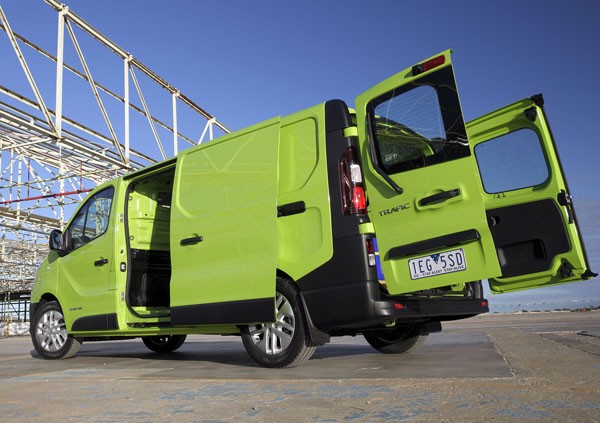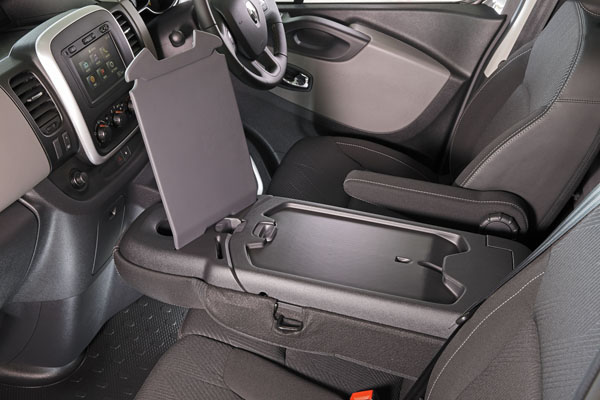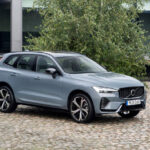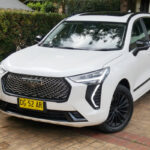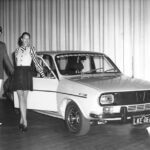Renault’s relentless return to Australia is continuing apace, with the company selling over 10,000 vehicles in 2014. Becoming he first French marque to achieve this milestone.
The redhot Clio and Megane models are grabbing all the publicity in the motoring pages, but the light commercials are doing their fair share in the background. These come in three sizes, the little Kangoo (love the name!), midsize Trafic and the big Master. All-new models are rare events in the LC class so the news of the upcoming Renault Trafic has had potential buyers talking for months.
This time the Trafic (which we reckon is best pronounced Trafique in the French manner!) has lost some of the radical French quirkiness of its predecessor. While still pretty bold with a large grille and prominent Renault diamond badge, we do miss the rounded cabin top and the deeply dipping door windows.
There are fewer changes to the shape at the Trafic’s rear, which remains square and substantial. This is a deliberate move, as customised interiors have been a strong selling point in these Renaults in Australia and Europe. Keeping the interior of the new van virtually identical to the superseded one means specially built units can be easily transferred from the superseded model to the new.
Bumpers are important things in French vehicles, if you’ve ever been in Paris you will have seen the seemingly impossible tight parking spaces there. So Trafic has giant bumpers front and rear, and side bumpers that are larger than many cars front units.
While the shape of the new Trafic might not be as sensational as the old one’s there’s a great range of striking colours that really make it jump visually. Have a talk to your local Renault light commercial vehicle specialist to get some ideas for making your company’s name grab attention.
A considerable amount of design effort has gone into making the driver’s life comfortable. The bulkhead, if chosen, is mounted a little further rearwards to give additional fore-and-aft travel of the seats, the driver’s seat is lower and has more recline. The steering wheel now adjusts in and out as well as up and down.
Trafic is set up with a single seat for the driver, and a moderately wide bench seat for two passengers, however they had better be slim or good friends. Cleverly the passenger seat backrest is in two parts with the one nearest the driver becoming a desktop when folded down.
Options include mobile phone and tablet cradles, there’s room for a laptop computer, and an A4-size clipboard sits close to the driver’s left elbow.
There are so many stowage areas; bins, boxes and nook and crannies that I’m not sure we found all of them during our five-hour initial period with the Trafic at its media launch in Adelaide. Perhaps take the kids on your private test drive and see what they can hunt down!
A clever feature is the stowage area underneath the passenger seats that can hold fairly large items, perhaps a few bottles of French wines? Underneath that is an open area that’s lets you carry very long, and relatively thin, items that go all the way from the rear loading door to the under-dash area in the cabin.
New Renault Trafic is powered by the company’s well know R9M turbo-diesel engine. This comes in single turbo (the dCi 90) or twin turbo (dCi 140) format. The numbers refer to the horsepower output of the engine. Oddly, the French may have invented the metric system, but choose to use horsepower, perhaps because 90 and 140 horsepower sounds more impressive than the 66 and 103 kilowatts in Australian terms. Naughty!
Peak torque output is 260 Newton metres at 1500 rpm in the 90 engine, and 340 Nm at 1250 revs in the 140 horsepower unit. There’s a nice spread of torque throughout the range, but keep in mind these are very much commercial diesels and start to lose power once they get to 3500 rpm.
Euro engineers are designing amazing diesels these days and it’s hard to believe the capacity of both powerplants is just 1.6 litres. During our test driving in the Trafic 140 we found big torque and a light and easy gearchange action made it perform wonders on the road. Interestingly, the 90 hp unit wasn’t on offer for us to drive. Try the lower powered engine for yourself if you are planning to cart reasonably heavy loads
The Renault 90 horsepower engine is offered on both standard wheelbase, 3098 mm, Trafic and long wheelbase, 3498 mm. The twin turbo 140 horsepower only comes with the long wheelbase.
One thing that’s likely to hold up Renault Trafic sales in Australia is that there’s no automatic transmission. A six-speed manual is installed, take it or leave it – and buy a competitors’ van instead.
Though Renault Australia chief, Justin Hocevar says that about 90 per cent of light commercials sold in Europe have manual gearboxes, we noticed a slightly wry look on his face. There seems to be little doubt that he talks strenuously about this matter during visits to Renault’s head office.
Renault Trafic is a sensible French-built van with good performance and bit of flair in the way it drives and handles. The strong engine performance is likely to appeal to those who are looking for more than mere driving in their working lives.
The complete 2015 Renault Trafic range is:
Trafic L1H1 dCi 90: $33,490 (manual)
Trafic L1H1 dCi 140: $36,990 (manual)
Trafic L2H1 dCi 140: $38,490 (manual)
Option Packs:
ProPack: $1290
Premium Pack: $1900
Lifestyle Pack: $2490
Note: These prices do not include dealer or government charges. Contact your local Renault dealer for drive-away prices.





